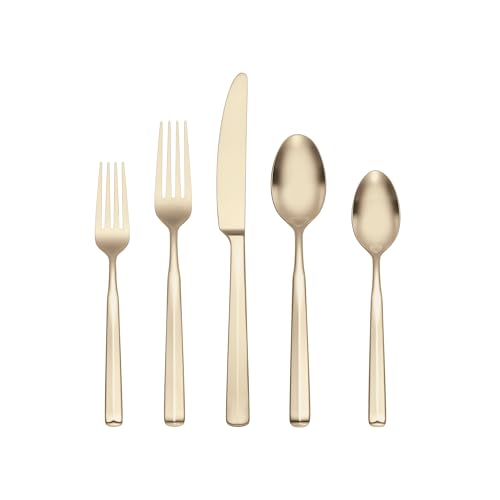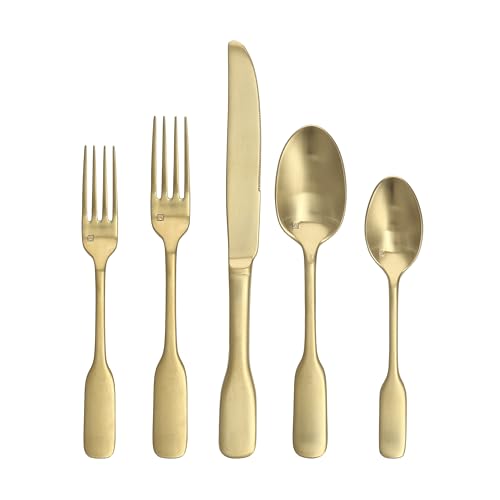In my previous article, I talked about satin flatware sets. In this article, we’ll try to answer a frequently asked question: Satin flatware or brushed steel? What makes this article special is not only the detailed research but also the sharing of real-life user experiences. Hope you enjoy reading.
Sometimes I find myself deep in Pinterest, scrolling through dreamy table settings. Then the phone rings, the doorbell goes off, or an email arrives—and I wake up from the dream. But it doesn’t take long before I go right back to where I left off. Lately, my focus has been on one question: satin finish or brushed steel? They may sound similar, but they feel completely different.
To make this topic easier to understand, I’ll try to explain it as if two friends are chatting. I think this will make it more memorable and help us connect more genuinely.
✨ Definition and Technical Features of Satin Finish Flatware
This material can be known by different names. You might hear it referred to as satin-finished stainless steel or simply satinized steel. It’s not harsh and has a soft, metallic glow. Its smoothness and semi-gloss surface are what make it a preferred option.
While polished materials reflect light at a rate of around 70–80%, satin-finished stainless steel reflects light at about 40–50%. This gives us a key insight into its shine level.
With its light reflection and smooth texture, satin finish is a staple for your flatware drawer. It doesn’t shine like mirror polish (thankfully—fingerprints are a nightmare), but it also isn’t rough or industrial. It has a soft, subtle glow that reflects just the right amount of light.
How it makes me feel in three words: Calm, warm, understated.
Best suited for: Minimalist kitchens, Scandinavian tones, beige linen cloths, matte ceramic plates.
Satin finish brings a sophisticated feel without trying too hard. If your kitchen feels like the kind of space you’d light a candle in (even just for heating up leftovers), satin might be your perfect match.
🧱 Definition and Technical Features of Brushed Steel
The term “brushed steel” can vary slightly in technical usage. The material is used across different industries for different purposes. Sometimes it’s referred to as brushed stainless steel, other times as brushed coated metal. Since brushed steel undergoes a mechanical abrasion process, it’s known for having a textured surface.
Common features of brushed stainless steel:
The most known feature is its fine structure. In addition to that, it typically has consistent lines and is highly resistant to scratches. Its matte surface is a major advantage, making scratches less noticeable. While polished steel reflects 70–80% of light, brushed steel—with its low gloss—reflects only 20–30%.
After the definitions and technical details, here’s what we can say about brushed steel: It has character. It has texture and a bit of edge. Not rough, but definitely not soft either. It’s the kind of finish that says, “Yes, I know what I’m doing in the kitchen”—even if you’re just reheating takeout.
What brushed steel feels like: Modern, bold, assertive.
Best suited for: Concrete countertops, black kitchen cabinets, bold pendant lights, geometric tableware.
This style is sharper—both literally and stylistically. If you love clean lines and modern design—maybe even a little “brutalist” if we’re being specific—this one’s made for you.
So, Which One Wins?
Honestly? There’s no winner. It all depends on your style. Satin finish can look great in modern kitchens because its softness adds contrast. Brushed steel can also work in cozier spaces if you use it to add a bit of texture.
Me? I went with satin. It gave me an elegant feel without the fuss. But ask me again next week—I might be looking for a brushed set just for a change. (Thanks, Pinterest.)
So, which team are you on—soft glow or steely edge? Either way, you’re setting the table in style.












